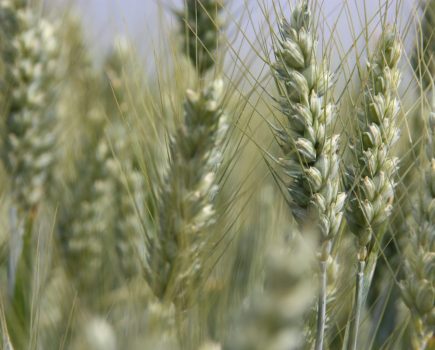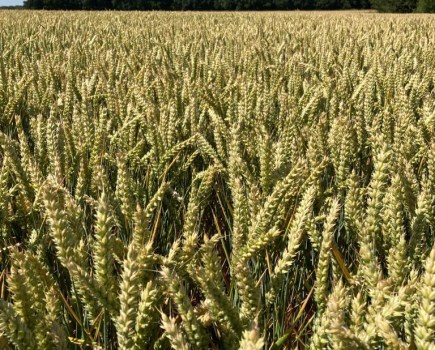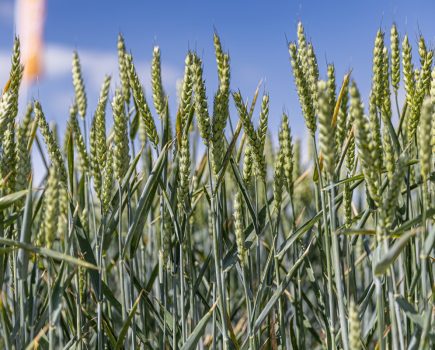Researchers are suggesting plant breeders and variety certification agencies pay too little attention to soil conditions, potentially resulting in varieties which may not be fit for purpose. CPM puts their case to the UK seed industry.
“In our view, plant breeding research may have to pivot, to test genotypes under a wider range of contrasting soil conditions.” DR SAJJAD RAZA
By Mike Saull
A multidisciplinary team of researchers is urging plant breeders and testing bodies to revise breeding programmes to consider soil characteristics when selecting new varieties for planting on farm.
Their data – published in the journal Nature Plants – suggests cereal testing currently uses a ‘one-size-fits-all’ soil environment. They say this pays scant attention to the capacity of new genotypes to deliver optimal yield under the increased stresses faced from the rapidly evolving dynamics of UK soils.
According to Dr Sajjad Raza from the University of Nottingham, who led on this research undertaken as part of the BBSRC ‘Delivering sustainable wheat project’, soil conditions are becoming increasingly diverse.
“Higher temperatures, changing rainfall patterns and an increased frequency of extreme weather events due to climate change are exacerbating soil stresses,” he says. “To protect soils, future management must prioritise soil conservation, primarily through the adoption of sustainable agricultural practices.
“Reduced or no tillage techniques, cover cropping, and residue retention will lead to future soils which are more variable in structure because many of the processes involved are more biologically driven.”
Sajjad highlights that the dynamic nature of key soil properties and their potential effect on plant yield raises several important questions for crop breeders and soil scientists, including whether modern cultivars can achieve high yields under changing soil conditions.
“In our view, plant breeding research may have to pivot, to test genotypes under a wider range of contrasting soil conditions including those observed under sustainable agriculture management such as reduced and zero tillage, which often leads to harder soils,” he adds.
As part of the team which includes scientists from Rothamsted Research and the John Innes Centre, Sajjad and colleagues conducted an extensive bibliometric analysis to assess global research on plant breeding and its proportional focus on soils and their physical properties.
The evidence, based on more than 650,000 published papers, suggests 90% of the authors undertaking plant breeding-related research hadn’t considered the effect of soils.
This ratio was even lower when it came to testing plant genotypes under variable soil physical properties, with only around 1% of papers mentioned testing cultivars under contrasting soil physical properties such as bulk density or soil texture.
Sajjad suggests this disconnect between breeding activities and soil science also extends to seed certification agencies. “To be certified, new genotypes undergo mandatory statutory testing processes to ensure their distinctiveness, uniformity and stability.
“However, none of the seed certification agencies worldwide have any defined protocols to test the performance of new varieties under variable soil conditions.
“From the publications we explored, breeding trials are mainly conducted on high-yielding soils and prioritise traits such as yield and disease resistance,” he continues. “Consequently, breeding lines become varieties based on tests on a limited range of soil types which can lead to a strong bias towards those with high-yield potential.”
Sajjad believes that the longstanding disconnect between soil science and plant breeding arises from a combination of historical, institutional and practical factors which have hindered collaborative efforts.
“Going forward, this disengagement between plant breeding and soil science leaves open major questions about whether modern cultivars can achieve potential yields under contrasting and changing, future soil physical or tillage conditions.
“While higher temperatures due to global warming might positively influence soil microbe activity and speed up the breakdown of organic matter, they also increase moisture loss from the soil, thereby restricting soil potential and future variety performance.”
He points out that policy makers are backing moves to increase the retention of organic carbon and so encourage better soil health on farms – this includes restricting soil cultivation.
“Ever since we started more intensive agricultural activity in 1960s, we’ve lost a huge amount of carbon from soils. Moving to reducing tillage and the use of cover crops, and so on, will help to stem this loss.”
Sajjad adds that early research as part of this project confirms that soils are denser and less porous in reduced tillage system, while soils which are loosened prior to drilling are more porous, but less stable.
“Some studies also show that zero tillage can boost soil organic matter and reduce greenhouse gas emissions and if we move from a current global estimate of 12% of agricultural land under these systems to a much higher level, then do we have seeds which can cope?” he queries.
While accepting that soils are extremely variable and increasingly heterogeneous in nature, Sajjad proposes that the industry could do more to test the ability of new varieties under different soil conditions.
“We can now use techniques such as high-resolution soil mapping and monitoring systems to capture spatial variations in bulk density and soil texture. Given that soil texture influences water availability, this data can guide the development of genotypes tailored to specific soil types to ensure optimal yields across diverse environments.”
In addition, in much the same way hospitals use CT-scanners to assess hidden tissues and organs in humans, techniques such as X-ray Computed Tomography imaging can be used to monitor root growth under different soil conditions such as texture, structure, bulk density, without having to disturb the soil or crop.
These insights could then be directly integrated into breeding pipelines to select genotypes with desirable root traits for specific soil conditions, ultimately improving crop resilience and yield under diverse soil environments.
Sajjad explains: “It’s likely some breeders are already undertaking testing across a range of soil conditions, but the published literature suggests this is limited. It’s vital that varieties growing in future soils can thrive under a range of conditions where nutrient and water acquisition is likely to be more challenging.”
Despite the findings in the study, KWS wheat breeder, Mark Dodds, says UK cereal varieties are currently tested in a range of soil types across the length and breadth of the country.
“These are robust tests and only the best, most consistent, varieties are recommended after three seasons. Comparisons across soil type and texture play a part in this process and these details are highlighted through the Recommended List.
“However, to go further and increase moisture loss from the soil thereby restricts soil potential and future variety performance,” he suggests.
Mark points out that a key part of variety testing is ensuring all plots and replicates are grown in homogeneous conditions including an even seedbed for consistent emergence.
“Our trials indicate this isn’t easy to achieve in a reduced cultivation or min-till situation resulting in considerable variation between plots and replicates, making real varietal performance differences difficult to judge.”
Even so, Mark acknowledges that assessing varieties in more difficult structured soils in extreme conditions elsewhere in the world – for example, sub-Saharan Africa – could well be more pertinent. “I’m not sure just how relevant a worldwide desktop study is to more fertile, high-yielding countries in the world such as the UK.”
Niab research lead, Dr Stéphanie Swarbreck, agrees that changing farming practises such as reduced application of fertiliser and reduced tillage are likely to exacerbate soil differences and it’s sensible that these are considered when developing and assessing varieties. However, there’s no simple fix.
“Our geneticists, physiologists and soil scientists are looking to better understand how different practises affect the performance of commercial cereal varieties as well as pre-breeding genetic material.
“This includes a project looking at variety traits for regenerative agriculture, funded by The Morley Agricultural Foundation and a new multi-partner project, funded by the Novo Nordisk Foundation, to explore interactions between diverse wheat material and the soil microbiome.”
According to Niab’s Dr Phil Howell, this will tap into thousands of the institute’s pre-breeding lines developed variously from large multi-parent populations; including material with altered root morphologies.
“This work is important to identify the traits which are underpinning performance under varied soil conditions. However, the number of lines that can be tested even under these conditions, is limited.”
Niab is also investigating whether it might be possible to screen for some of these traits earlier in the selection process, when there’s the greatest potential for genetic improvement.
For example, BBSRC has funded the construction of a seed drill which can plant the small plots required by researchers and breeders for early generation testing – when the number of lines to test is high but the seed quantities available are low, into minimum tillage seedbeds.
Niab’s head of agricultural crop characterisation, Dr Margaret Wallace, believes the current variety registration and seed certification systems don’t take wider interactions with the soil into consideration. However, by taking root assessments as an example, it’s difficult to see how robust, repeatable and fair procedures can be integrated into these statutory testing systems without introducing significant costs, she says.
“The criticism that breeders are developing ‘one-size fits-all’ varieties isn’t only a result of the current testing system, but also of the desire of growers to see relatively few varieties on the RL, and the high costs and complexities of running efficient breeding programmes,” explains Margaret.
“Each year, commercial plant breeders will typically screen hundreds of thousands of plants in the field, from hundreds of new genetic combinations, with each individual plant potentially representing a unique new variety.
“At this scale it’s simply not possible to carry out complex and detailed screening. Material selected in early generations will then be retested at multiple locations, over multiple years, across different microclimates and soil types, before the breeders enter their best candidates into official trials.”
In conclusion, Margaret says the cost of first developing and then maintaining a suite of several varieties, each adapted to specific environments and soil types, is likely to quickly outweigh the relatively modest royalty income that new varieties generate.
This article was taken from the latest issue of CPM. Read the article in full here.
For more articles like this, subscribe here.
Sign up for Crop Production Magazine’s FREE e-newsletter here.




